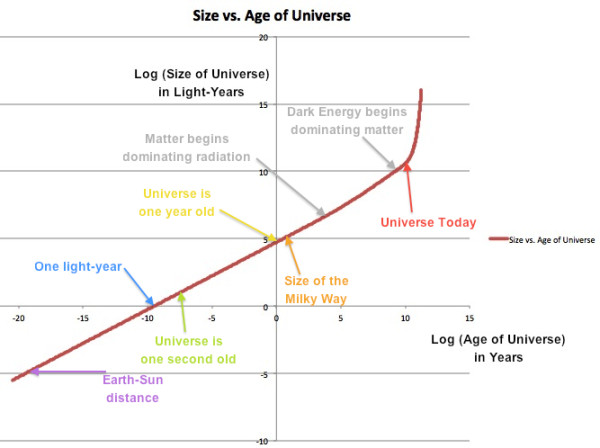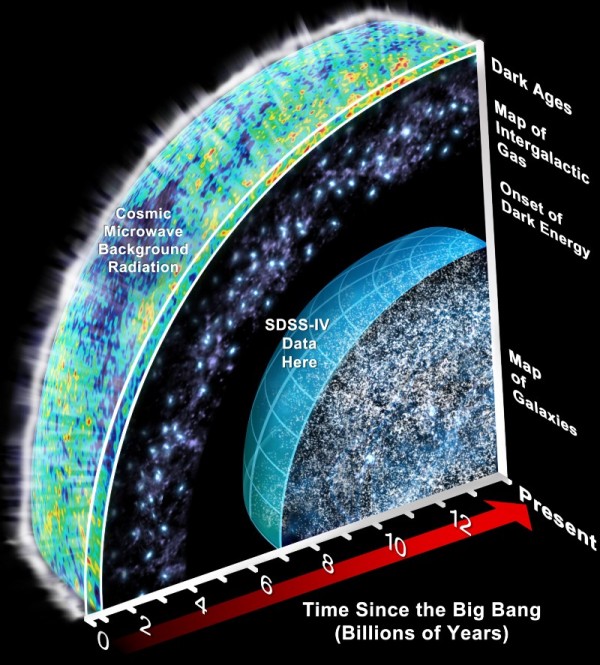"They say it all started out with a big bang. But, what I wonder is, was it a big bang or did it just seem big because there wasn't anything else drown it out at the time?" -Karl Pilkington
Looking out at the distant stars, galaxies and radiation in the Universe today, we've been able to determine not only what it's made out of, but how long it's been since the Big Bang: 13.8 billion years. Put all that information together, and you can also figure out how large the observable part of that Universe is today. From our point of view, it appears to extend for 46.1 billion light years in all directions.
So what if you extrapolate backwards, to the very end of inflation and the start of the hot, dense state we identify with the Big Bang, and ask how large that 46.1 billion light year "size" was back then? How big would it be? Depending on the particulars of when inflation came to an end, the answer is somewhere between the size of a soccer ball and the size of a city block, no smaller and no larger.
 Image credit: E. Siegel, of the size of the Universe (in light years) vs. the age of the Universe (in years).
Image credit: E. Siegel, of the size of the Universe (in light years) vs. the age of the Universe (in years).
Come find out all the gory beautiful details on this week's Ask Ethan!


“…how long it’s been since the Big Bang: 13.8 billion years… From our point of view, [the universe] appears to extend for 46.1 billion light years in all directions.”
Ethan,
If the universe is only 13.8 billion years old, how can we “see” things at a distance which light would need 46.1 billion years to travel?
See Noevo -- My layman's understanding is that it is due to the expansion of space. During the 13.8 billion years the light from the most distant objects has been travelling, space has expanded to place those objects 46 billion light years away.
Patrick, sn has had the answer explained to him, and has read, or had the opportunity to read, explanations on this blog. He just chooses to lie and pretend he's never seen the answer.
Something else to think about; we are not necessarily at the centre of this expansion, so the extent of the universe is much greater than that which we can see for the moment. What we do not see is the changes having taken place up to the present moment.
The link to the Forbes site does not work on an iPad with Safari missing the full article
Stop spamming slashdot with your crap Siegel !